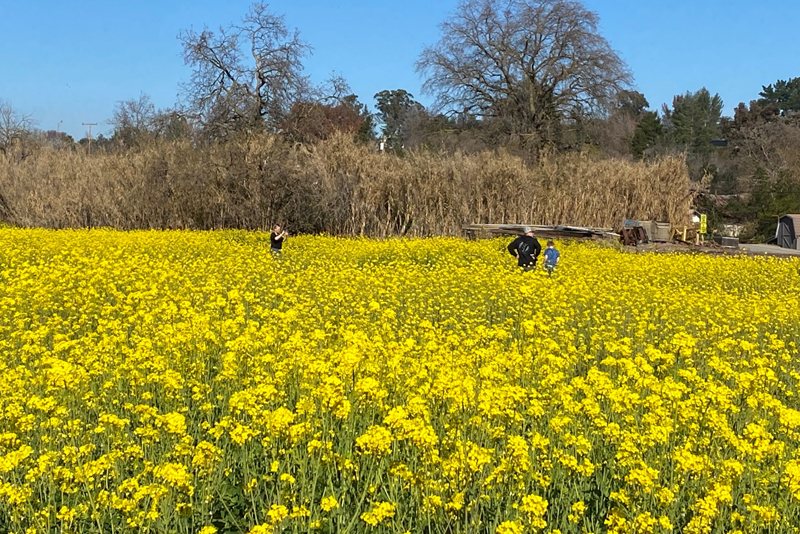Super Bloom turns golden hills yellow

CONTRA COSTA COUNTY, CA (Feb. 20, 2022) — Once only found in Eurasia, there is now arguably not a single place on the planet where the tiny yellow aBrassica rapa L flowers are not found. There’s even been evidence of them at the North Pole and Greenland.
With this month’s unseasonably warm weather, Super Blooms of black mustard cover virtually all of California’s golden hills. No where are these displays more stunning than right here in Contra Costa County.
This winter annual thrives in nutrient- and lime-rich soil. It grows extensively on the plains and mountains, cultivated fields, roadsides, waste places, pastures, gardens, clearings, shores, riverbanks, railways and orchards. Although it’s an invasive weed with a big downside, mustard does help to prevent erosion and suppress weeds and soil-born pests.
The plant was brought from Eurasia by the Spanish colonizers as a spice crop, but it spread quickly taking advantage of natural habitats that are constantly disturbed either by fire or by the creation and maintenance of roads, one reason it’s so visible near highways. Experts say it can be combated locally but will probably never be eradicated.
Edible options
Despite mustard’s downside, the stunning yellow flowers have several culinary and medicinal uses.
The leaves, flowers, seed pods and roots are all edible. The seeds can be pressed to make mustard oil, and the leaves can be served as mustard greens.
Some people eat the flowering tops just before they open, cooked like broccoli. The tender young leaves can be used in place of spinach in recipes.
Wash the greens well and cook them in salted water. Wild mustard can be sharp when raw and bitter when cooked. Blanching or boiling it for a few minutes will remove the bitterness. The longer you boil, the less bitter it will be.
There is a caveat here: Everything in moderation. Too much of anything may hit the tummy the wrong way, as cattle ranchers have found. They consider it a poisonous plant because cows often get extremely sick after eating it.
Potential natural remedies
One may take the same precautions when considering the mustard plant for medicinal purposes.
A mustard plaster may help alleviate pain and swelling. Crush or grind the seeds and mix them with a little bit of water to form a paste. Spread the mustard plaster on a cloth and place it on the chest, sore joints or any other areas that hurt.
The plaster will open up blood vessels and enable the system to remove toxins. It also increases blood flow, which eventually reduces swelling and pain. In addition, field mustard may help reduce headaches.
For sinus issues, another home remedy suggests mixing a little ground mustard into a bowl of hot water and inhaling the vapor.
Take care if you experiment with these natural aids because they do not always work like a charm. In fact, people sensitive to the plants may experience eye irritation or skin rashes.
So, enjoy the great outdoors strolling through fields of mustard flowers or those sprouting along roadsides or a hillside. Along the way, stop and pick some to see what you might discover.
Editor Tamara Steiner contributed to this article.
